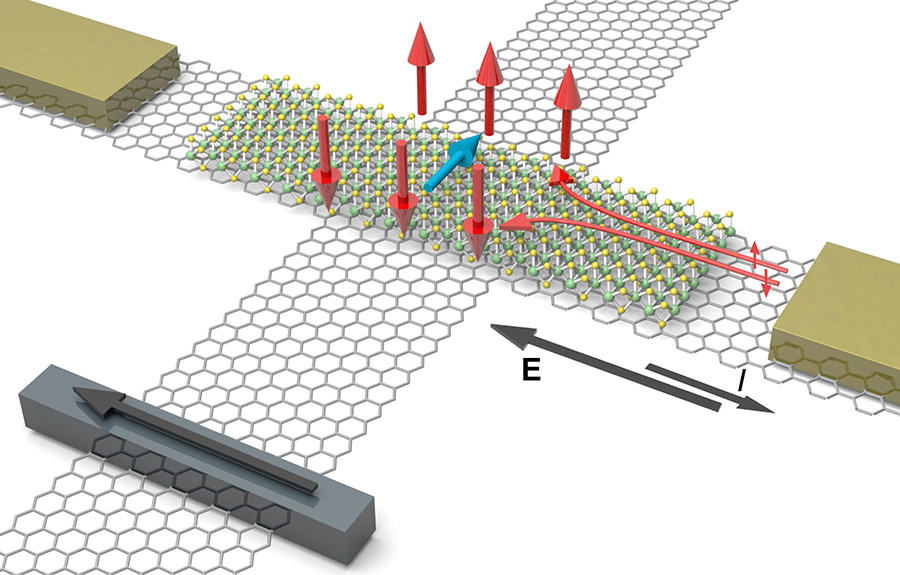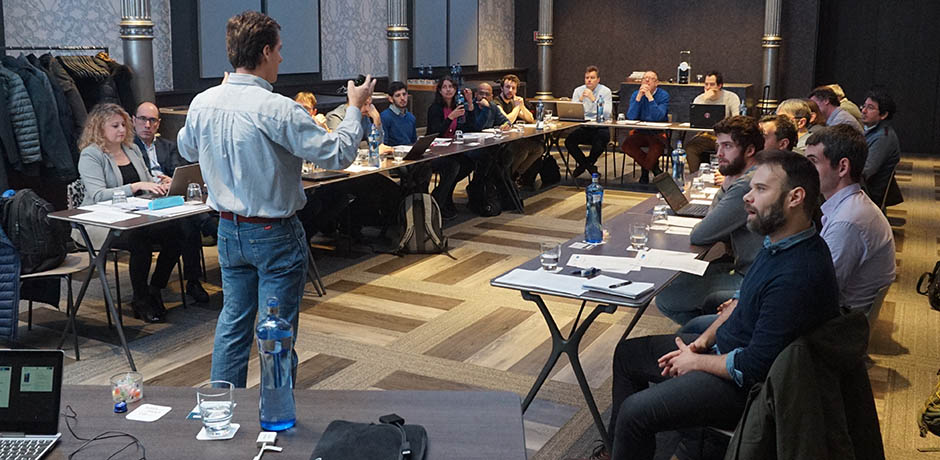Severo Ochoa Programme 2018-2022 Pillar 1: APPLICATION DOMAINS - Information and Communication Technology (ICT)
ICT research at the ICN2 pushes at the boundaries of understanding of single state variables and hybrid states with the aim of taking information processing beyond the use of the electron charge alone. The diversity and complementarity of the ICN2 groups allow them to tackle almost any basic research challenge in this field.
Highlights
Manipulation of spin currents for advanced electronic devices
Advances in engineering of 2D heterostructures for controlling spin properties in graphene have been done. This research opens the door to new applications, such as the development of ultra-compact electronic and low energy consumption devices and magnetic memories.
ERC Advanced Grant to reduce energy use in information technology
Prof. Dr Clivia M. Sotomayor Torres has been assigned a European Research Council Advanced Grant to develop structures that allow taking advantage of phonon properties to transmit information using small amounts of energy.
FET-PROACTIVE project TOCHA to apply a topological approach to information technology
Prof. Sergio Valenzuela is coordinating the EU funded FET-PROACTIVE project TOCHA, which started in January 2019. The project aims at developing new technologies taking advantage of the unique properties of topological matter. This can prove crucial for information processing, quantum communication and metrology.
Most activities in this area are currently carried out at the level of basic technology research. While these studies will continue due to their scientific relevance, some effort will also be devoted to supporting the progression of these technologies from concept to prototyping.
The key research priorities established for the 2018-2022 period are the development of new science based on novel nanomaterials and the elaboration of innovative device concepts with applications in: phononics, spintronics, nanomechanics, flexoelectricity, quantum technologies –including for new types of computer memory and switches– and wearable or implantable devices.
Specific actions will be taken to meet these objectives, such as: establishing a new research group on ultrafast dynamics; stimulating collaboration between device- and material-oriented groups; forging strategic alliances with national and international companies and technology centres; and organising two international workshops.
Prof. Sergio Valenzuela
Leader of ICN2 Physics and Engineering of Nanodevices Group




